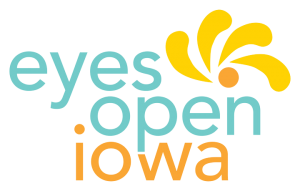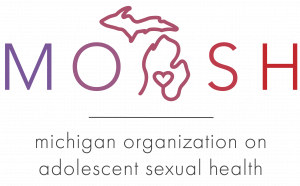Puberty is a time of physical, emotional, and social changes that can cause some young people great angst. Equipping students with the knowledge and skills about these changes can help them navigate through this challenging time and emerge strong, happy, and healthy. This workshop will provide you with a number of lessons to teach students about the changes of puberty, and will help you improve your skills on addressing this sensitive topic in an inclusive way. This workshop can be tailored to meet the specific needs of your group, school, or agency. All content is aligned with the National Sexuality Education Standards, the National Teacher Preparation Standards for Sexuality Education, and the Professional Learning Standards for Sex Education.
Training Hub
The Sex Education Collaborative Training Hub lists trainings for sex educators, facilitators, and other professionals on best practices for sharing important information with clients and the public. From teaching anatomy inclusively to effectively addressing bias in the classroom to addressing racial justice and equity in sex education, the Training Hub includes trainings, technical assistance, and policy support from state, regional, and national leaders in the field of sex education.
Please note: The Training Hub includes both in-person and online professional trainings. If you see a training you are interested in and it isn’t listed as virtual, please reach out directly to any of our members to find out what's possible!
Trainings Offered by State-Based and National Organizations
Displaying results 91 - 95 of 137Puberty 101: Teaching about the Birds and the Bees
- Indicator 2 (K-12): Demonstrate three student-centered instructional approaches that support a variety of learning styles. (S)
- Indicator 2 (K-12): List three physical, three social, and three emotional changes that occur during puberty.
- Indicator 3 (K-12): Identify three practices that students can adopt for maintaining healthy habits beginning during puberty.
Virtual PD - Using Medically Accurate Terms When Teaching Sex Education
Virtual Professional Development is a simulated classroom where teachers can practice teaching student avatars using short scenarios and support from an instructional coach, so they can quickly learn and master the skills they most need to be effective. With upper elementary, middle and high school classrooms, Virtual PD has scenarios for teachers of all grade levels across a wide range of topics aligned with the Professional Learning Standards for Sex Education (PLSSE). You can watch the video here (link is external) to learn more about Virtual PD.
Using the Virtual Professional Development classroom simulator, the educator will practice Using Medically Accurate Terms When Teaching Sex Education with the student avatars. In this scenario, the educator will soon be starting a unit on puberty with their students. One of the points they want to stress with their students is the importance of using medically accurate names for body parts, including reproductive anatomy and external genitalia. In this simulation with five students, the participant will need to demonstrate the ability to use medically accurate terms and explain the benefits of teaching these to students.
- Indicator 2 (K-12): Demonstrate the ability to use medically accurate terms for sexual and reproductive anatomy, including all external genitals. (S)
Adolescent Romantic Relationships: Disrupting What We Think We Know
In this course, participants will:
- Describe the developmental benefits of adolescent romantic relationships.
- Describe three emerging principles related to adolescent brain development and their relationship to adolescent health, including adolescent romantic relationships.
- Identify ten developmental tasks of adolescent development and the aligned opportunities for supporting young people in romantic relationships.
- Describe the evidence-based qualities of a healthy adolescent romantic relationship.
- Describe the impact of trauma on developing and navigating romantic relationships.
- Identify strategies and actions that trusted adults can use to support the development of healthy adolescent romantic relationships.
- Identify at least three action steps, based on the teaching from this training, that will strengthen their programs targeting adolescents.
Visit ETR's Training & TA Form to submit your request and receive cost information.
- Indicator 1 (K-12): Describe three distinguishing characteristics between healthy and unhealthy relationships, involving family, friends, and/or romantic partners.
- Indicator 3 (K-12): Describe three strategies for teaching students communication skills.
- Indicator 5 (K-12): Describe three ways to help students set and respect personal boundaries in relationships.
At EyesOpenIowa, we specialize in helping educators, schools, and organizations deliver accurate, inclusive, and policy-aligned sexual health education. With decades of experience, our dedicated training and leadership teams work closely with you to develop a customized plan that meets your specific needs. Here's how we can support you:
Curriculum Alignment to Policies and Standards We ensure your curriculum is fully aligned with state and federal policies, as well as the latest educational standards, so your program is compliant and impactful.
Curriculum Development We collaborate with you to create a robust, tailored curriculum that incorporates the latest research and best practices, ensuring it is both effective and engaging.
Curriculum Review for Cultural and LGBTQ Inclusivity Our team assesses your content for cultural relevance and LGBTQ inclusivity, providing recommendations that foster an environment of respect and understanding for all students.
Curriculum Review for Medical Accuracy We verify the medical accuracy of your curriculum, ensuring all health-related content is up-to-date and evidence-based, promoting healthy decision-making.
Scope and Sequence Development and Review We help you develop or refine your scope and sequence to ensure learning objectives are met in a logical, structured manner, maximizing educational impact.
Partner with EyesOpenIowa to elevate your curriculum with customized, expert support, ensuring it is comprehensive, inclusive, and meets the highest standards of educational excellence.
Virtual PD - Managing Personal Boundaries and Disclosure
Virtual Professional Development is a simulated classroom where teachers can practice teaching student avatars using short scenarios and support from an instructional coach, so they can quickly learn and master the skills they most need to be effective. With upper elementary, middle and high school classrooms, Virtual PD has scenarios for teachers of all grade levels across a wide range of topics aligned with the Professional Learning Standards for Sex Education (PLSSE). You can watch the video here (link is external) to learn more about Virtual PD.
Using the Virtual Professional Development simulated classroom, the educator will practice Managing Personal Boundaries and Disclosure When Teaching Sex Ed with the student avatars. In this VPD scenario, the educator will introduce the topic of reproduction and pregnancy with an established classroom community. In this simulation with the five students, the educator will ask students to talk with a partner about myths they’ve heard related to pregnancy prevention and then have each student report back sharing one myth with the class. The participant will need to demonstrate the ability to maintain appropriate professional boundaries when teaching about sexuality.
- Indicator 3 (K-12): Demonstrate how to reduce the impact of educators’ passive and/or active personal disclosure on the educational environment. (S)




